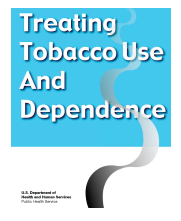Module 1 Tobacco Dependence
Relapse Prevention
Core Competency for this Lesson
-
Identify the chronic relapsing nature of tobacco dependence, including typical relapse patterns, and predisposing factors.
Lesson Activity
-
Complete Self-Check Quiz
![]()
Alaska Native man speaks out about his recovery from nicotine addiction
The video below is from the Center for Disease Control Tips for Smokers Campaign. The Alaska Native man, Michael, speaks about the consequences of his actions. Michael begins by saying, "I felt that the damage wouldn't show up until I was an old person, ready to die, so I wasn't worried about it." The discussion is on the cusp between contemplation and action, and tips for successful recovery.
Consider Michael's story and how it might relate to Emily's story.
Relapse Prevention
Relapse is one of the most challenging issues that emerges when dealing with addiction. Research varies on predicting the factors surrounding relapse- it varies considerably from person to person and depends on the given situation.
A study conducted recently by researchers Gokbayrak, Paiva, and Prochaska (2015) focused on determining the factors in relapse. They suggested the following issues important to consider:
- Age
- People between the ages of 18-24 are more likely to relapse.
- This age group has the highest rates of smoking in the US.
- This age group also report they are highly stressed.
- People between the ages of 18-24 are more likely to relapse.
- Psychological Aspects
- People with severe addictions are more likely to relapse.
- For this group, the higher number of attempts the higher the potential for relapse.
- People who have tried to quit 9-10 times are at higher risk of relapse than people who have never tried or tried very few times to quit.
- People may consider their situations as a factor into smoking relapse.
- The stressful situations or experiences immediately preceding a relapse.
- People with severe addictions are more likely to relapse.
- Time
- People who have quit between 36-72 months are more likely to relapse.
- Action Stage Evaluation
- Evaluating the pros and cons during the action stages seems to have little to no effect on relapsing.
- Evaluating the pros and cons during the preparation for action stage have an effective and supportive impact.
- Self-Reevaluation
- The more structured behavioral components such as support networks, avoiding triggers, etc. are important components relapse prevention or intervention.
- Self-Efficacy
- Observing and integrating successes build people's confidence while quitting smoking.
- Stress
- Stress seems to be the common factor to combat when dealing with smoking.
|
Self-Check Quiz This is your opportunity to see how you are doing learning this lesson. You will have three chances and the highest score will be the grade. Click here or on the icon for your Self-Check Quiz Note: this quiz opens in a new page. If you close that page when complete, you will return to the same place in the lessons. |
Resources
Centers for Disease Control. (2015). CDC Tips From Former Smokers - Michael: I Live in Constant Fear. Retrieved from this site.
Gokbayrak, N.S., Paiva, A.L., & Prochaska, J.O. (2015). Predictors of relapse among smokers; transtheoretical effort variables, demographics, and smoking severity. Retrieved from http://www.ncbi.nlm.nih.gov/pubmed/25481450
![]()